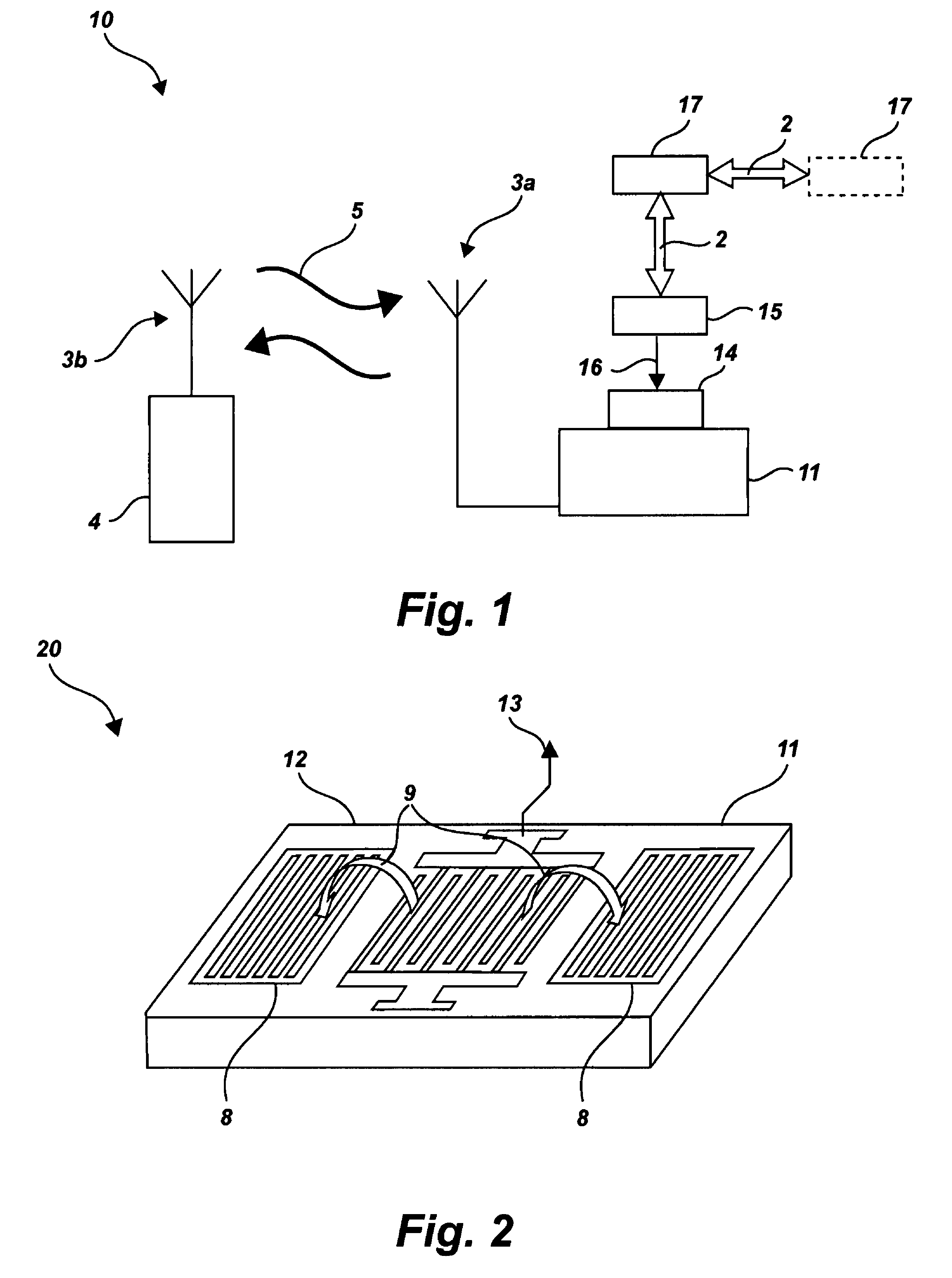Wireless surface acoustic wave-based proximity sensor, sensing system and method
a technology of proximity sensor and surface acoustic wave, applied in the field of proximity sensors, can solve the problems of high wire requirements, high undesirable weight of isolation shielding or shielding, and currently available options have their own, and achieve the effect of fewer mask and processing steps and simple device fabrication
- Summary
- Abstract
- Description
- Claims
- Application Information
AI Technical Summary
Benefits of technology
Problems solved by technology
Method used
Image
Examples
Embodiment Construction
[0026]The subject invention relates to a wireless proximity sensor, system and method for detecting the presence of both moving and stationary objects. FIG. 1 shows a schematic representation of the proximity sensing system 10 of an embodiment of the present invention. The transceiver 4 sends through its associated antenna 3b a request for information 5 about a position of an object. The request for information 5 sent by the transceiver 4 powers the SAW device, enabling it to operate wirelessly within the proximity sensing system 10.
[0027]The wireless proximity sensing system 10 generally includes one or more first antennas 3a and one or more second antennas 3b. The first antenna 3a is associated with the proximity sensor for wirelessly receiving the request signal from the transceiver 4 and transmitting a response that includes information about a position of an object based on a location of the magnet 15 relative to the body 11 of the SAW device and relative to the sensing element...
PUM
 Login to View More
Login to View More Abstract
Description
Claims
Application Information
 Login to View More
Login to View More - R&D
- Intellectual Property
- Life Sciences
- Materials
- Tech Scout
- Unparalleled Data Quality
- Higher Quality Content
- 60% Fewer Hallucinations
Browse by: Latest US Patents, China's latest patents, Technical Efficacy Thesaurus, Application Domain, Technology Topic, Popular Technical Reports.
© 2025 PatSnap. All rights reserved.Legal|Privacy policy|Modern Slavery Act Transparency Statement|Sitemap|About US| Contact US: help@patsnap.com



